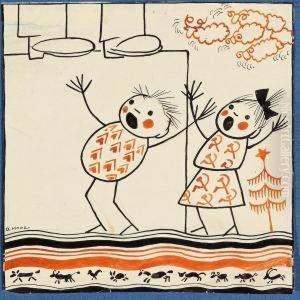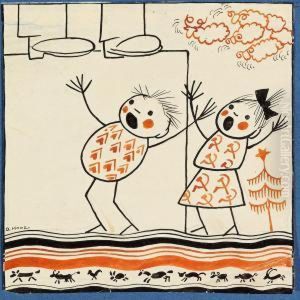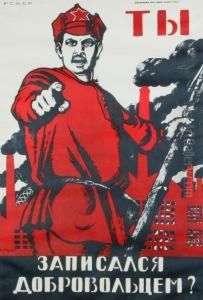Dmitry Stakhievich Moor Paintings
Dmitry Stakhievich Moor was a Soviet artist and graphic designer, born Dmitry Stakhievich Orlov on October 9, 1883, in Novocherkassk, Russian Empire. He is best recognized for his powerful posters during the Russian Civil War and the early Soviet period, embodying the energetic and propagandistic spirit of the times. Moor was a pivotal figure in the development of the Soviet political poster, employing his art as a means to influence public opinion, mobilize the masses, and serve the revolutionary cause.
Educated at the Stroganov Moscow State University of Arts and Industry, Moor began his career as a caricaturist for various magazines before turning his focus to political posters during World War I and the subsequent Civil War. His most famous work, 'Have you signed up as a volunteer?', became an iconic representation of Soviet propaganda, demonstrating his skill in using stark, compelling imagery and minimal text to communicate powerful messages.
Throughout the 1920s and 1930s, Moor's work evolved with the Soviet Union's changing political landscape, but he remained dedicated to the Communist cause, illustrating the struggles and achievements of the Soviet people through his art. He was not just a poster artist but also worked in book illustration, contributing to the visual culture of the era.
Moor was recognized for his contributions to Soviet art with several honors, including the Order of the Red Banner of Labour. Despite the accolades, like many artists of his time, he had to navigate the complexities of creating art under a regime that demanded strict adherence to its ideological line.
Dmitry Stakhievich Moor passed away on November 24, 1946, in Moscow, Soviet Union. His legacy endures, not only in the collection of his works housed in museums around the world but also in the influence he had on the development of graphic design and political propaganda. Moor's ability to distill complex political and social messages into compelling visual forms marks him as a significant figure in the history of art and political communication.


